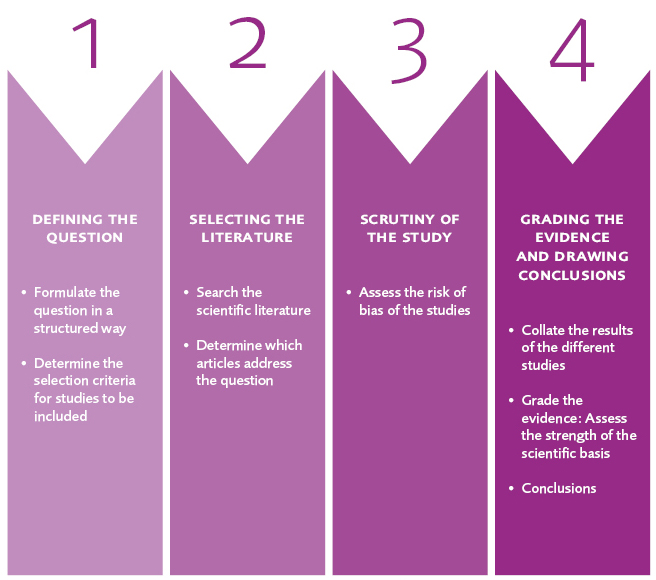Identification of research topics
Suggestions for topics warranting assessment, e.g., treatment methods or other procedures, are received from many sources, for example from government authorities, professionals working in the health and medical services, social services, or from SBU’s scientific advisory committee or board. The main justification for undertaking an SBU assessment is to determine whether a treatment is effective. We use standardized formats such as PICO when formulating the research question(s) for the review.
Our assessments are run as projects. For every major project we recruit an interdisciplinary working group, comprising experts in the field.
Selection and assessment of studies
SBU collects, evaluates, and compares the results of research published to date. This means that we systematically search the scientific literature to find evidence to answer one or more questions. For example, to determine which treatment is best for a certain disease, the best diagnostic method or, within social services, which supportive efforts are effective. Relevant studies, i.e., those which address the question, are selected, and assessed for risk of bias.
Synthesis and certainty assessment
The working group helps to assess the collected scientific material. Quantitative reviews yield meta-analytic results or syntheses without meta-analysis. Qualitative reviews may provide meta-syntheses. Quantitative results are assessed according to GRADE principles and qualitative findings in line with GRADE CERQual. Health economic and ethical assessments are often also undertaken.

Figure 1. How an assessment is conducted
 Swedish Agency for Health Technology Assessment and Assessment of Social Services
Swedish Agency for Health Technology Assessment and Assessment of Social Services
 Share on Facebook
Share on Facebook
 Share on LinkedIn
Share on LinkedIn
 Share via Email
Share via Email
